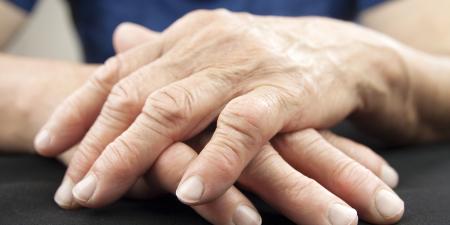At the turn of this century, the University of Wisconsin School of Medicine and Public Health (SMPH) participated in statewide focus groups, public surveys, and other assessments that indicated a need for strategies to address health disparities in rural Wisconsin. In 2005, approximately 30 percent of the population in Wisconsin, but just 11 percent of its physician workforce, resided in rural areas. The number of graduating SMPH medical students expressing an interest in practice in rural, medically underserved areas was a low 3 -5 percent [1]. The SMPH decided to enhance its efforts to address the physician workforce needs in rural Wisconsin by coordinating and expanding existing rural programs and curricula.
Shortly after this, rural hospital administrators ranked inadequate physician workforce as the most urgent threat to the future of rural hospitals. Primary care physicians were most greatly needed, but general surgeons and a number of other specialists were also in demand. In 2003, a task force comprising representatives from the Wisconsin Hospital Association, Wisconsin Medical Society, several health systems, and the state’s two medical schools began meeting to assess this issue. The task force published its report, Who Will Care for Our Patients? [2] in 2004, recommending that one of the medical schools develop a program to increase the number of students planning to practice in rural Wisconsin.
The SMPH is a state medical school with academic partners in Milwaukee (Aurora Health Care), Marshfield (Marshfield Clinic) and LaCrosse (Gundersen Lutheran Health System), as well as a number of other community clinics and hospitals throughout the state. In 2004, the SMPH moved into a new building that could accommodate classes of 175 students, 25 more than the previous class size.
With financial support from the Wisconsin Partnership Program, representatives from the SMPH faculty, rural hospitals, the state academic affiliated institutions, and Wisconsin communities and county public health departments planned the design and implementation of the Wisconsin Academy for Rural Medicine (WARM), a rural program for 25 medical students in the School of Medicine and Public Health. An advisory committee served as a sounding board for ideas about admissions, student services, delivery of the curriculum, and faculty development at the regional and rural sites. Each of the three SMPH academic partners identified rural clinics and hospitals that could host students and provide instruction.
Approaches to admissions used by other rural medicine programs were adapted to the school’s process [3-5]. In addition to a record of academic success, factors that have been found predictive of rural practice, such as being from a rural community, rural community engagement (e.g., coaching kids’ sports teams, community service), demonstrated interest in rural life, and interest in a generalist practice, were incorporated into the admissions criteria. A supplemental application and an interview with a WARM representative assist in identifying the applicants most likely to practice in rural Wisconsin. A subcommittee reviews applicants to the WARM program and recommends candidates to the SMPH admissions committee.
WARM students complete the first 2 years of medical school in Madison with the students in the traditional program, but are assigned to rural clinics in the Madison area for the required clinical experiences during those years. Elective rural summer externships and research opportunities are available to WARM students between the first and second years.
The WARM students then select one of the regional sites (Marshfield, LaCrosse or Green Bay (with Aurora/BayCare) to serve as their hub for the third and fourth years. During this time, 7 months are spent in rural communities surrounding their hub, each of which has developed its own approach to the rural immersion experience based on the educational opportunities available. Marshfield chose a more traditional rotational block approach, with some rotations in rural areas and others at the tertiary center. LaCrosse developed an integrated approach in which the students spend 6 months in the tertiary center and 6 months in a single rural community, where rotations are structured in an integrated, longitudinal manner rather than in three focused blocks. Green Bay is structuring the experience with 2-month required rotations in a rural community early in the third and fourth years along with ongoing experiences with a panel of patients at the same site throughout the third and fourth years.
In addition to the regular curricular requirements, WARM students must complete curricular components based on recommendations from the rural medical educators’ group of the National Rural Health Association. These components were incorporated into an elective course for WARM students in their first 2 years of medical school and a Rural Core Day curriculum that occurs once a month during the third year.
Program evaluation thus far has consisted of annual surveys and focus group assessments by the WARM students, who are also subject to the required SMPH academic assessment. As anticipated, because of the admissions process, students maintain a high level of interest in rural practice throughout medical school (8.86 to 8.89 on a 1-10 scale) and their “confidence” in this desire has been found to increase as they progress through the program. The students’ specialty interests align with the specialty needs in rural Wisconsin: of the current 53 students, 53 percent expressed an interest in family medicine; 18 percent in primary care, internal medicine, or pediatrics; 10 percent in general surgery and orthopedic surgery; and 9 percent in emergency medicine.
The number of applicants to the WARM program has been growing as awareness of it increases. There are a number of applicants from rural settings whose attributes suggest they would be excellent rural physicians, but whose academic records do not meet SMPH admissions requirements. To address this, we are considering whether to offer these candidates the opportunity for a year of focused study after college to prepare them for the academic rigors of medical school, an initiative similar to the Rural Medical Scholars Program in Alabama [6]. We are also working to increase the financial support available for rural students. With the average income in rural areas being lower than in the rest of the state, the need for financial support is great; this may interfere with the ability of promising students to attend medical school.
The first WARM students will graduate in May of 2011. While the program needs to be continually assessed to see that long-term goals are attained, early outcomes suggest that WARM has been successful so far. This is due, we believe, to an admissions process designed to admit those with an increased probability of practicing in rural Wisconsin, collaborative delivery of the curriculum with rural partners, and encouragement of the students’ interest in rural medical practice, community engagement, and rural living.
References
-
Association of American Medical Colleges. 2005 Medical School Graduation Questionnaire Individual School Report: University of Wisconsin Medical School.
-
Wisconsin Hospital Association and Wisconsin Medical Society. Who will care for our patients? Wisconsin takes action to fight a growing physician shortage. http://www.med.wisc.edu/files/docs/education/warm/who_will_care_for_patients.pdf. Accessed February 12, 2011.
- Rabinowitz HK, Diamond JJ, Markham FW, Paynter NP. Critical factors for designing programs to increase the supply and retention of rural primary care physicians. JAMA. 2001;286(9):1041-1048.
-
Glasser M, Stearns MA, Stearns JA, Londo RA. Screening applicants for a rural medical educational program. Acad Med. 2000;75(7):773.
- Boulger JG. Family practice in the predoctoral curriculum: a model for success. J Fam Pract. 1980;10(3):453-458.
- Wheat JR, Brandon JE, Leeper JD, Jackson JR, Boulware DW. Rural health leaders pipeline, 1990-2005: case study of a second-generation rural medical educational program. J Agromedicine. 2007;12(4):51-61.



